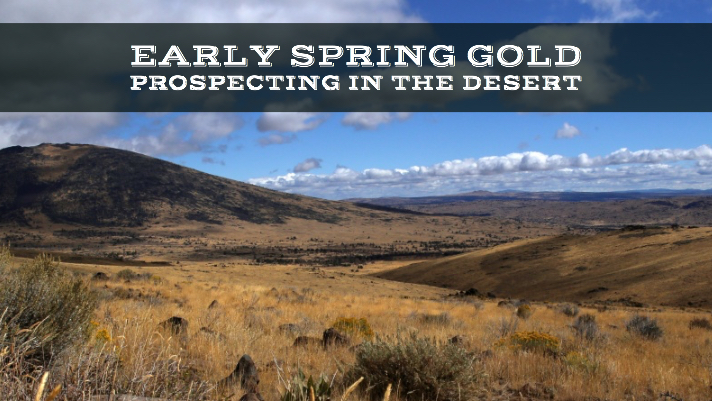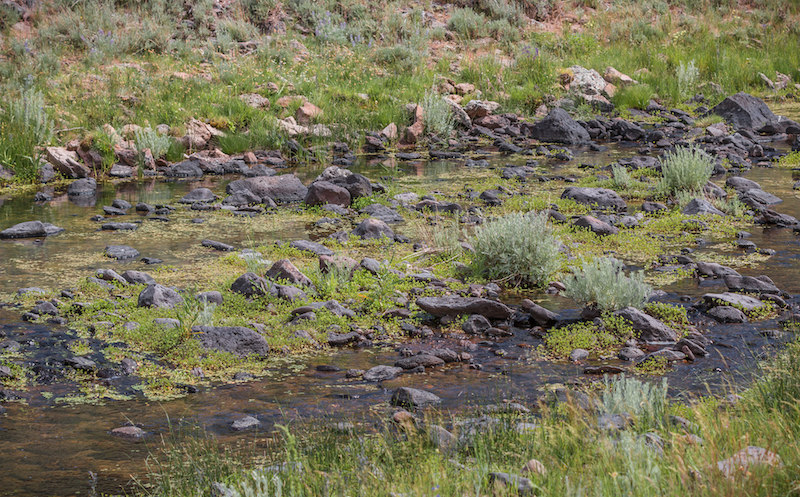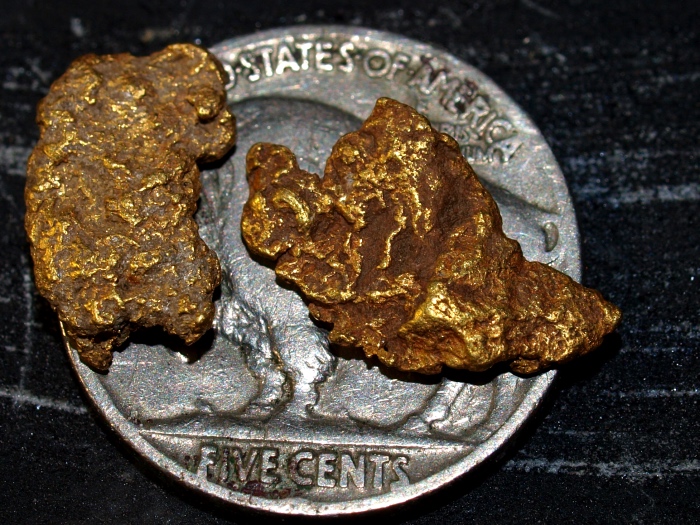
If you are waiting for those nice warm summer days before you venture out into the desert to look for gold, then you are missing your best chance to find gold. And sure, those sunny days and mild temps during the summer and fall are a great time to be out in the field.
In the high desert of the Great Basin, early pring is the time to be out in the field. In fact, early spring is my favorite time to be out in the high desert for one big reason. WATER!
I do a lot of prospecting in a region known as the Great Basin; a high desert region that covers several states in the West, including some very gold rich mining areas in Idaho, Oregon, and Nevada.
The Great Basin is considered a “high desert.” While it’s still a desert ecosystem, this area still gets considerably more precipitation than the deserts in the Southwest such as the Chihuahua or Mojave desert.
Most of this water comes in the wintertime in the form of snow. This region gets an occasional spring and summer storm, but they are rare. Usually by mid-April you can expect blue skies and very little in the way of moisture.
This makes early spring a fantastic time to be out in the field looking for gold because it is the only time that you can expect to find water. There is a very short window of time when snow melt feeds those desert washes with life nourishing water. And for the gold prospector, this is the time when sampling and prospecting for new gold-bearing areas out in the desert will be most efficient.

This stream only flows for a few short weeks during the springtime. Then it will dry up and likely won’t have any water in it until next year. Take advantage of this short period of time in the desert when water allows you to quickly sample with a gold pan to locate gold deposits.
Standard Desert Prospecting Methods
Of course you don’t need water to find gold. It just makes it a lot easier.
There are two main methods that desert prospectors use. Both work well, but they each have their limitations.
First is the drywasher. During the early days, the drywasher was the primary way that men would separate the gold from the desert gravel. They didn’t require water; instead they used a combination of air pressure and vibration to separate out the gold.

Drywashers still work and are still used today, although less that they once were. For one thing, drywashing can be dusty and dirty. You have to shovel dry dirt into the head of the unit, and you really work up a sweat doing that all day. You can guess what it’s like when you have a combination of sweat and dust…
The second method to come about in recent decades of course is the metal detector. These are great tools for prospecting in the desert since they don’t require water and they also don’t require nearly as much hard labor to operate. Their only real downside is that they can only find nuggets, so if you are in an area that only has fine gold then they won’t find you any gold.

So Why is Water Important?
The great thing about springtime in the Great Basin is that you can use the common placer mining equipment that you can’t generally use in the desert.
Gold pans, sluice boxes, highbankers, even small dredges can be used for a short time if there is enough water!
This opens up the desert to types of mining that can be really efficient. They simply won’t work in the summer when the water is gone, but during the spring you will be able to take advantage of the water melting off from the winter snows.
There are a couple ways to look at this limited time opportunity. You could use this window of time to mine as much gold from the washes as you can while the water is there. However, I would urge you to use this time to also do some sampling.
The water makes it super easy to do some quick sampling with a gold pan and cover lots of ground. Pan out some small tributaries in areas that don’t have any significant evidence of past mining. You might just find gold in areas that others don’t know about.
After you have found some gold with your pan, you can either work the area with bigger equipment like a sluice or highbanker, or you can make a note to come back later in the summer. Now that you know there is gold there, it may be a good area to search with a good metal detector and see if there are any big gold nuggets hiding nearby.

Use it While it’s Here!
The water doesn’t last long… usually you are looking at a very short period of time when the snowmelt comes off in the desert. Often it is just a few days of hot temps that burn off any remaining snow in the high desert. When this happens you’ve got the water, but once its gone its gone!
A simple sluice can work pretty well to recover gold. A highbanker will also do a good job. Gold pans are fine, but I would suggest that you use them primarily for sampling and then scale up to larger equipment once you actually start mining.
Expect Mud and Lots of it
There is one serious concern that you need to keep in mind when you are out there prospecting in the spring and that is MUD. There are places in the high desert where the mud can be terrible and you can easily bury your truck up to the axles if you are not careful.
Keep an eye on the upcoming weather. If a rainstorm is in the forecast then make sure you don’t venture too far away from pavement. One neat thing about the Great Basin is that you can get a long way from civilization. That is something that I love, but I also know that I can’t depend on others to help me if I get in a sticky situation.
Carry good gear with you, plenty of food and water, and make sure you have a capable 4×4 vehicle.
The high desert still hides a lot of gold. Early spring might just be the best time to find it.
Next: Using a Drywasher to Find Desert Gold

